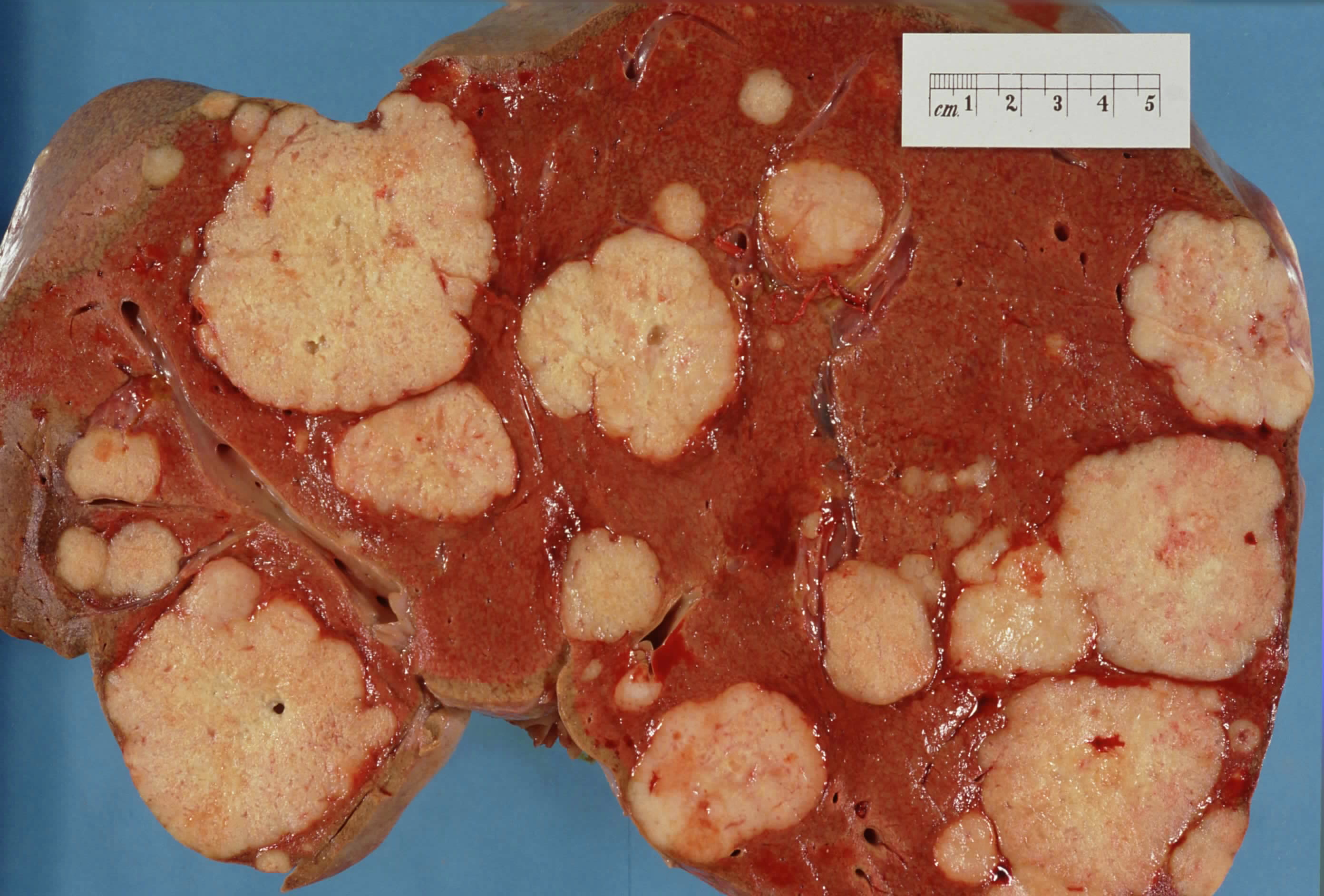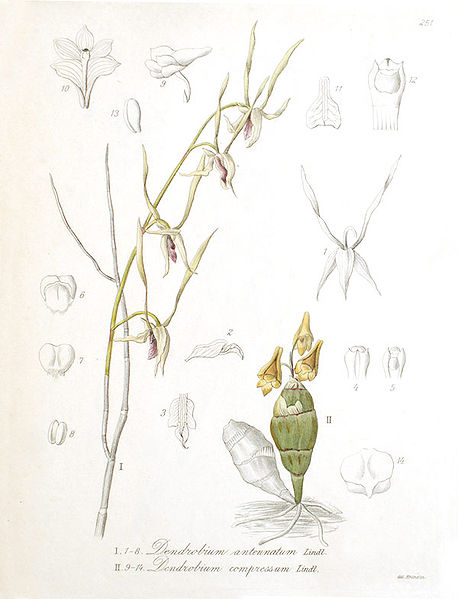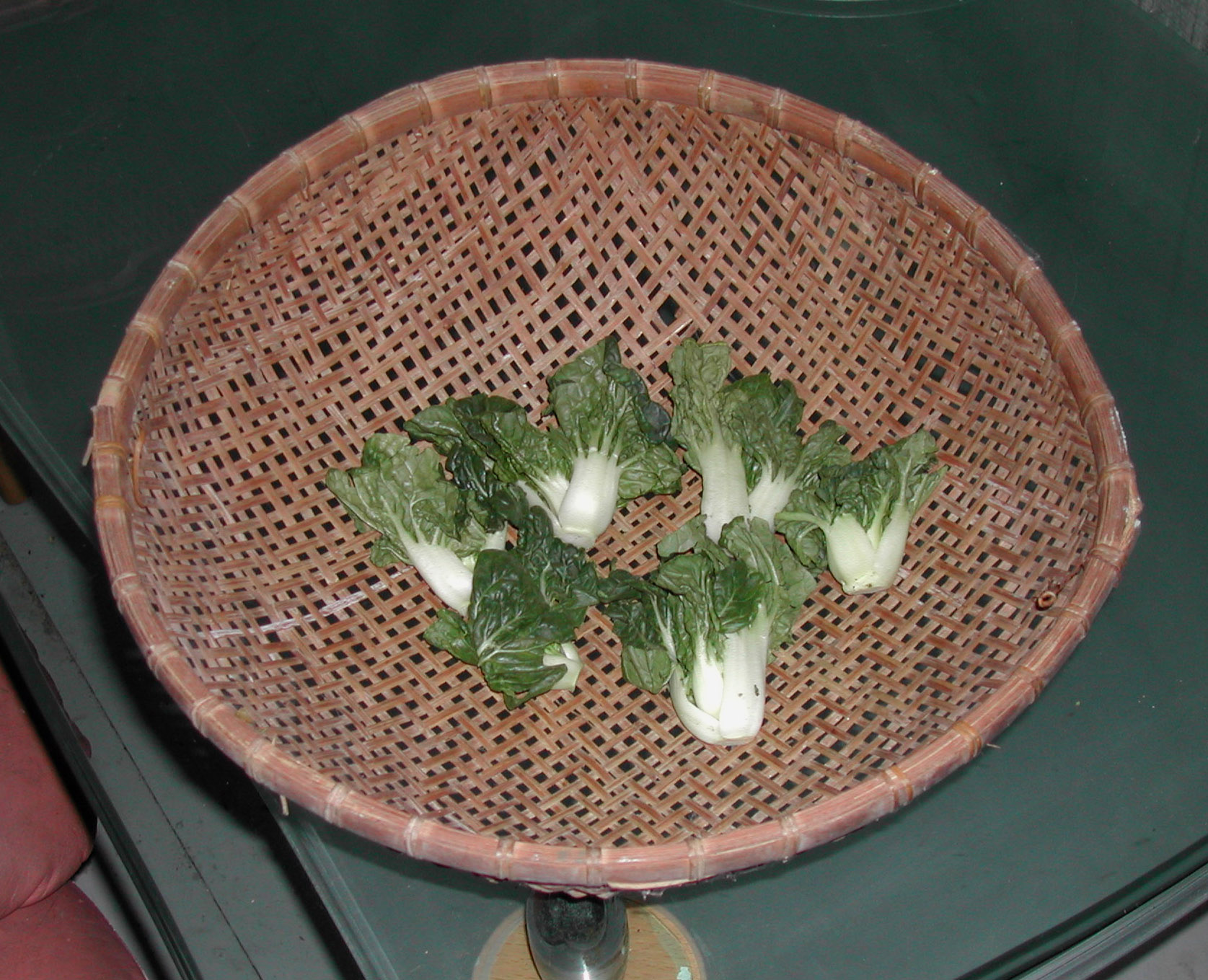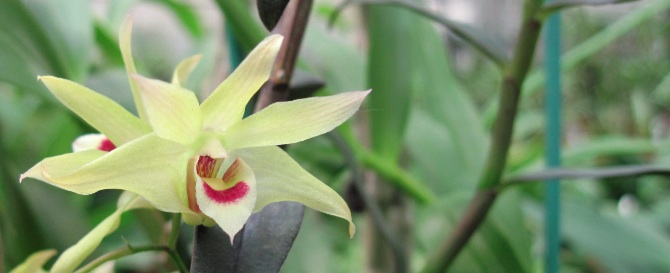Medicinal Uses and Interactions
Medicinal Uses
In traditional Chinese medicine, Dendrobium officinale
is used to “nourish the Yin system of the body, strengthen the
stomach, to induce saliva, and to increase appetite” (Hu, 1970). “Tiepi Fengdou”
is another name for this traditional Chinese medicine, it will
help to “...clear away unhealthy heat, promote the production of
body fluid, resist cancer, and prolong life” (Ding, Zhang, and
Ding, et al, 2008).

There are many ways that Dendrobium officinale is used
in the Chinese culture. The orchid is used after it has been
dried or used fresh. *
Dry medicines
Chin-ch’ai
Chin-ch’ai is made from the stem of the plant. First the stem is
compressed until it is 1-1.5 cm in diameter, and approximately
30 cm long. If you are looking for this type of medicine it
should have a golden color with a glossy finish.
Huang-ts’ao
Huang-ts’ao is also made from the stem of Dendrobium officinale,
and also has a glossy appearance. Normally this medicine is sold
in Northern China and Manchuria.
Fêng’hu
Fêng’hu is made from the stem of Dendrobium officinale, but it
appears in spirals of 1-1.5 cm in length with 3 mm diameter. The
outside of this medicine has a yellowish green appearance.
Fresh Medicine
 Hsien-hu
Hsien-hu
Hsien-hu is the fresh version of Chin Ch’ai. This medicine also
has a yellowish green appearance. The stem is usually 1-1.5cm in
diameter. Commonly this form is collected in fall. If collected
in the spring, D. officinale should be lain out and moistened
with water. If D. officinale is collected in the winter, it can
be kept in a bamboo basket within a open environment.
Huang Ts’ao
Huang Ts’ao is only made by D. officinale and is commonly dark
green and has black nodes. To prepare this medicine, D. officinale
must be dried directly over a fire, then left out to
complete its drying process.
*These are traditional Chinese methods of using Dendrobium,
often more then one species of Dendrobium can be used to make
the same medicine.
Applications of Dendrobium officinale:
If D. officinale is dried, it must first be soaked in
water, drained from the water, then cut into smaller pieces at
about 2 cm in length. Denrobium officinale is prescribed in
0.2-0.4 oz.
Interactions
The roots also have a symbiotic relationship with fungi.
Mychorrizae incorporate within the roots of D. officinale and
aid in acquiring nutrients from the substrate. The roots of
D. officinale provide sugars to the mychorrizae fungi, so
both the fungi and the orchid can benefit from their mutualistic
relationship.
To discover more bits of information about D. officinale,
visit my Facts page.
Return to Home page.
